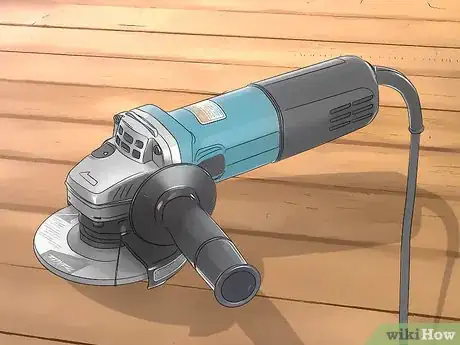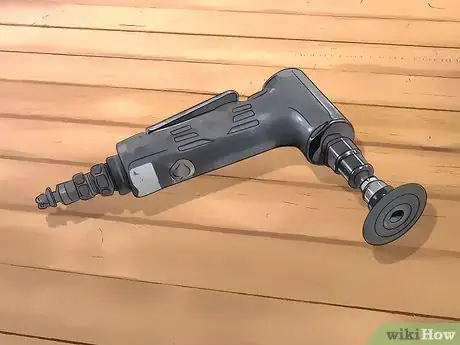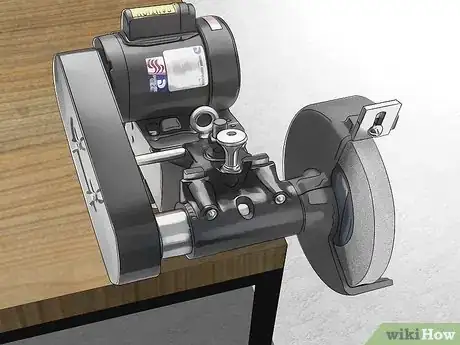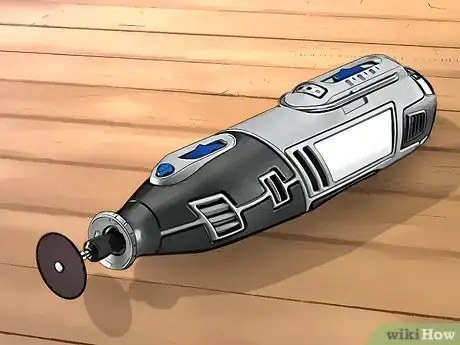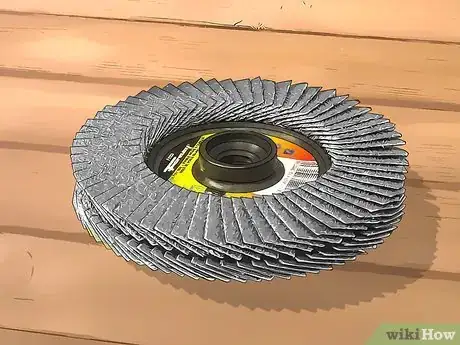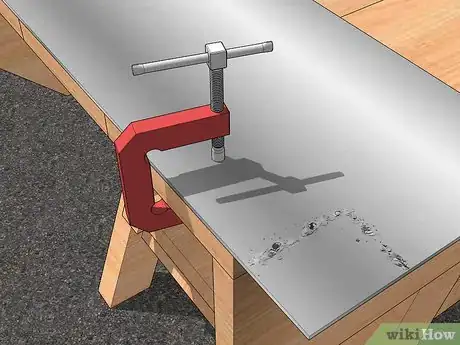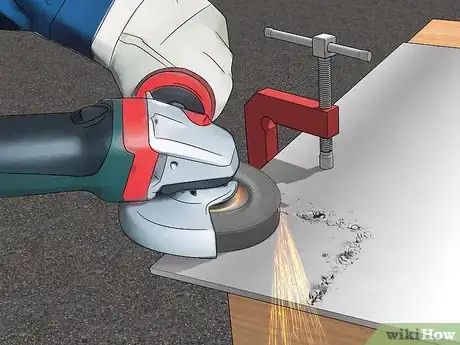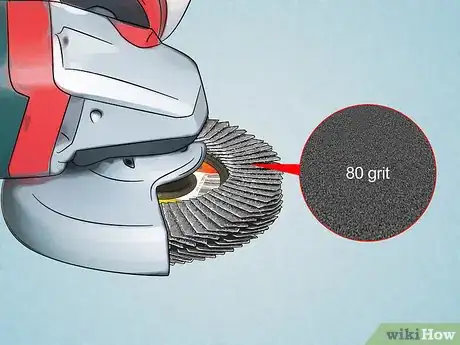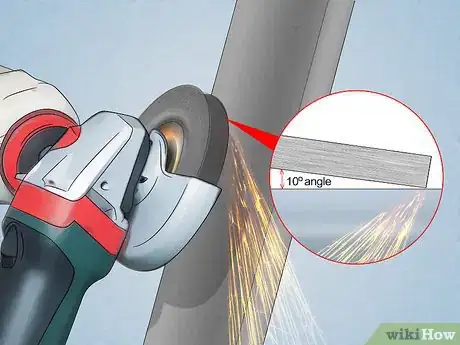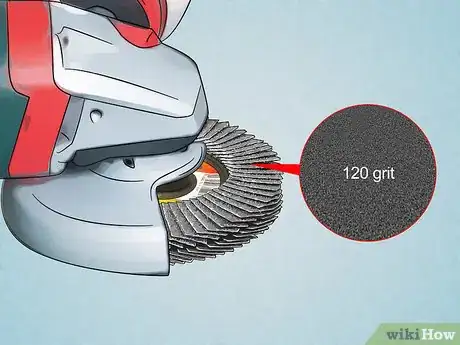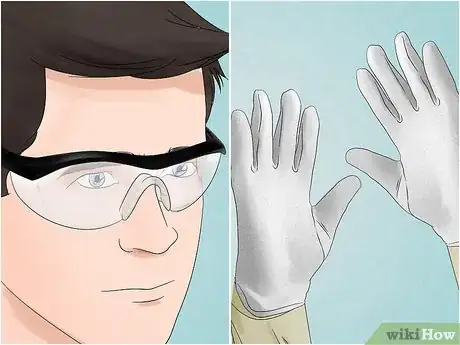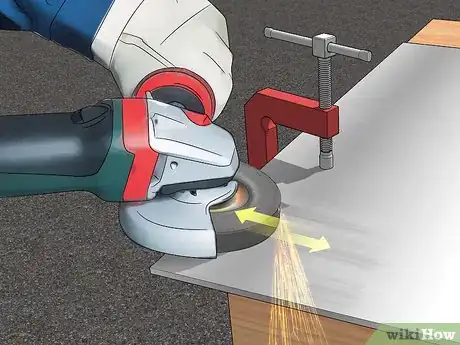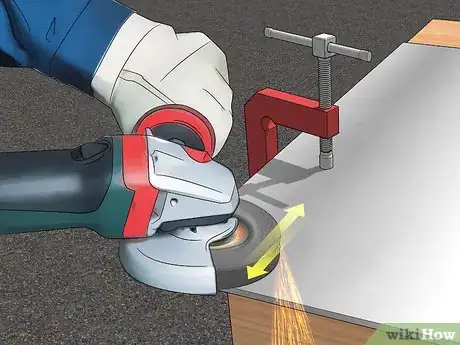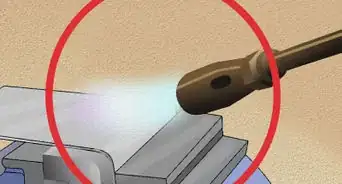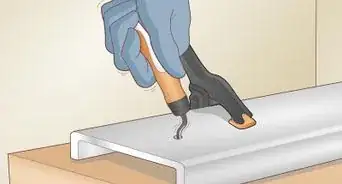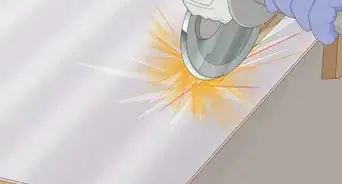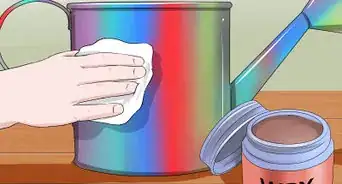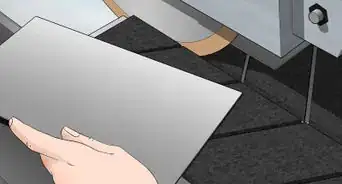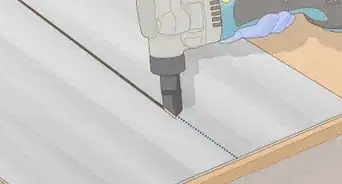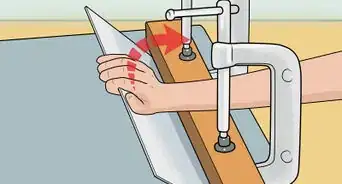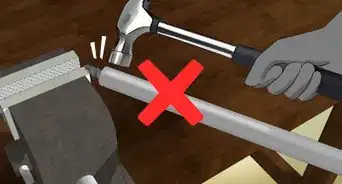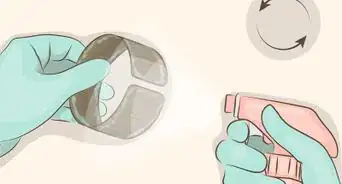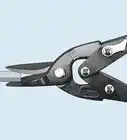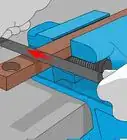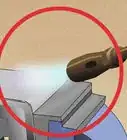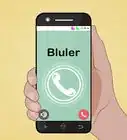This article was co-authored by wikiHow staff writer, Hunter Rising. Hunter Rising is a wikiHow Staff Writer based in Los Angeles. He has more than three years of experience writing for and working with wikiHow. Hunter holds a BFA in Entertainment Design from the University of Wisconsin - Stout and a Minor in English Writing.
There are 13 references cited in this article, which can be found at the bottom of the page.
This article has been viewed 38,550 times.
Learn more...
Grinding metal is a necessary process if you don’t want any sharp edges along a weld line or if you want to polish your piece. As long as you have experience with power tools and a shop to work in, you can grind metal yourself. With an angle grinder and a few different discs, you can smooth your edges and make the metal shine!
Steps
Choosing the Right Grinder
-
1Use an electric grinder to be fast and efficient. Electric grinders easily cut and grind through metal. These types of grinders work best on large jobs or making straight cuts since they are bigger and cannot easily move with finesse.[1]
- Electric grinders do not work well in tight spaces or curves.
-
2Pick an air grinder for small jobs that require finesse. Air, or pneumatic, grinders use pressurized air to power the machine. Use an air grinder if you have a smaller, delicate piece of metal that you need to work on.[2]
- Air grinders need an air compressor to run.
- Air grinders do not have as much torque so they can’t cut through metal easily.
Advertisement -
3Put on a grinding wheel on for large jobs. Grinding wheels are thick pieces of compressed composites that quickly grind through thick metals and remove big problems, like rust or tarnish.[3]
- Grinding wheels generate a lot of heat, which could cause thinner pieces of metal to warp.
- If a grinding wheel cracks from the heat, it could break and throw shrapnel.
-
4Use a Dremel tool with a grinding stone for small jobs. Dremel tools are small, handheld rotary tools used to shave away material. For work like sharpening blades, removing rust, or smoothing out short welds, use your Dremel.[4]
- There are many different styles of Dremel heads that you can attach to get smooth or rough finishes.
-
5Smooth welds with a flap disc. A flap disc is made of layers of sandpaper fit onto a hard backing piece. When you need to do finishing work or smooth out sheet metal without generating a lot of heat, attach the flap disc to your grinder.[5]
- Flap discs don’t last as long as grinding wheels and cost between $4-$10 USD per disc.
Smoothing Welds on Sheet Metal
-
1Clamp the metal to your work surface. Set one end of a C-clamp on the piece of sheet metal and open its jaws wide enough to clamp to your work surface. Once it fits around the edge of your table, tighten the clamp so it doesn’t move.[6]
- If your metal still moves around easily, put another C-clamp on the other end of your sheet.
-
2Put an 80-grit flap disc onto your grinder. Fit the center of the disc onto the end of your angle grinder. Screw on the plate that holds the disc in place until it doesn’t turn anymore.[7]
- Flap discs and angle grinders can be purchased at your local hardware store.
- Wear work gloves while handling the flap disc so you don’t scrape yourself on the sandpaper.
-
3Hold the grinding disc as level as you can to the piece of metal. Welds tend to have dips up and down, so holding the grinder at an angle could cause it to gouge into the metal. Keep your grinding disc nearly parallel to the metal so the grinder smoothes out the edges of your weld even to the sheet metal.[8]
- Some grinding discs have a slight angle to them. Try to use a disc with a flat edge.
-
4Grind along the length of the weld. Wear safety glasses or a full face mask so sparks don’t fly into your eyes while you’re working. Turn on the angle grinder and touch the top edge of the disc to the weld. Pull the grinder down your weld line in one long stroke so the weld doesn’t turn blue. Repeat the motion until the weld is completely smooth.[9]
- The sparks will shoot in the direction the disc is turning. Stand on the opposite side to ensure sparks don’t shoot towards you.
Paying Attention to Your Grinder
The spark flow from your grinder should consistently shoot out 3–4 feet (0.91–1.22 m) away from your piece for effective grinding.
The noise your grinder makes should be consistent. If it lowers in pitch, you're applying to much pressure to the grinder. If the noise gets higher, you're not applying enough pressure.
Grinding Metal Corners
-
1Use an 80-grit flap disc on your grinder when working on an outer corner. An 80-grit flap grinder will smooth out your surface without leaving deep scratches that lower grit disc would leave. Look at your local hardware store for your flap disc and screw it onto your angle grinder.[10]
-
2Hold the grinder at an angle so only the top or bottom of the disc touches the metal. Look for an arrow on top of your grinder to see which way the disc spins. If you want a rounded-off corner, hold the grinder to the metal at a 5 or 10-degree angle so the sparks fly away from the corner.[11] If you want to maintain a sharp, 90-degree angle, place the edge spinning towards the corner onto your piece. Work in short back and forth movements along the side of the metal near the corner.[12]
- Since the grinding disc spins in a circle, either the top or bottom of the grinder will go in the direction you need.
- Wear safety glasses and work gloves while working with your angle grinder.
- If you want more protection, wear a full-face welding mask.
-
3Use a standard metal grinding disc to smooth an inside corner. Attach a stiff, metal grinding disc to your angle grinder to work in tight interior corners. Hold the grinder so the edge of the disc is at an angle to the corner weld. Work in short movements to smooth the weld.[13]
- Make sure to use a disc that’s specifically made for grinding metal.
- Metal grinding discs produce more sparks than flap discs. Make sure to wear gloves, a full-face welding mask, and long sleeves.
Polishing Your Surfaces
-
1Attach a 120-grit flap disc to your grinder for a smooth finish. Set the disc on the end of the angle grinder so the sandpaper side is facing out. A 120-grit disc uses finer pieces of sandpaper and will smooth out your surface without leaving scratches.[14]
- Look for flap discs at your local hardware store or order them online.
Tip: If your metal is covered in rust, try using a 40-grit flap disc first to remove it. The disc will leave scratch marks, but it will be easier to smooth out later on.
-
2Wear safety glasses and work gloves. Grinding metal produces sparks that could burn if you come into contact with them. Put on long sleeves and pants to cover as much skin as you can. Make sure to protect your face as well as your hands while you’re working with a grinder.[15]
- If you want to protect yourself more, wear a full-faced welding mask.
-
3Work in long back and forth strokes across the length of the piece. Hold the flap disc at a 5 or 10-degree angle to the surface of your metal and turn it on. Work in small strip sections at a time until you’re happy with the texture of your metal. Completely grind the surface of your metal before moving on.[16]
- If your metal has nicks or rough edges, start with an 80-grit disc before moving to a finer grit. This helps preserve your discs for a longer amount of time.
- If your metal moves around easily, clamp it to your work surface.
-
4Polish in the opposite direction to smooth out any scratches. Work in strips perpendicular to the last direction you used your grinder. Start on one end of the piece of metal and work your way across the surface. This helps smooth out any texture left on your piece. Continue alternating grind directions until you’re happy with the shine of your piece.[17]
- Move clamps or turn your metal to make it easier to work on.
- Try different discs if you want a different texture pattern. Discs with a lower grit will make distinctive marks on your surface and create a different design.
Warnings
- Wear thick work gloves and safety glasses when working with a grinder so sparks don’t fly up into your face.⧼thumbs_response⧽
Things You’ll Need
Smoothing Welds on Sheet Metal
- C-clamps
- Angle grinder
- 80-grit flap disc
Grinding Metal Corners
- 80-grit flap disc
- Angle grinder
- C-clamps
- Metal grinding disc
Texturing Your Surfaces
- 120-grit flap disc
- Angle grinder
- C-clamps
References
- ↑ http://knowhow.napaonline.com/know-how-notes-cutting-and-grinding-metal/
- ↑ http://knowhow.napaonline.com/know-how-notes-cutting-and-grinding-metal/
- ↑ http://knowhow.napaonline.com/know-how-notes-cutting-and-grinding-metal/
- ↑ https://youtu.be/C9jK3hwBFtU?t=3
- ↑ http://knowhow.napaonline.com/know-how-notes-cutting-and-grinding-metal/
- ↑ https://youtu.be/QitWDNB_qSM?t=1m38s
- ↑ https://youtu.be/QitWDNB_qSM?t=1m5s
- ↑ https://youtu.be/XhOp91r3Ed4?t=17s
- ↑ https://youtu.be/XhOp91r3Ed4?t=31s
- ↑ https://youtu.be/W2su6wsInwY?t=3m31s
- ↑ https://www.thefabricator.com/article/finishing/eight-tips-for-effective-grinding
- ↑ https://youtu.be/tRuuvJguRSc?t=32s
- ↑ https://youtu.be/dh5X-fFN4_4?t=20s
- ↑ https://youtu.be/UXXM6i3FJ5s?t=4m21s
- ↑ https://youtu.be/EMJGJ9gAJig?t=2m24s
- ↑ https://youtu.be/EMJGJ9gAJig?t=2m24s
- ↑ https://youtu.be/EMJGJ9gAJig?t=3m15s
